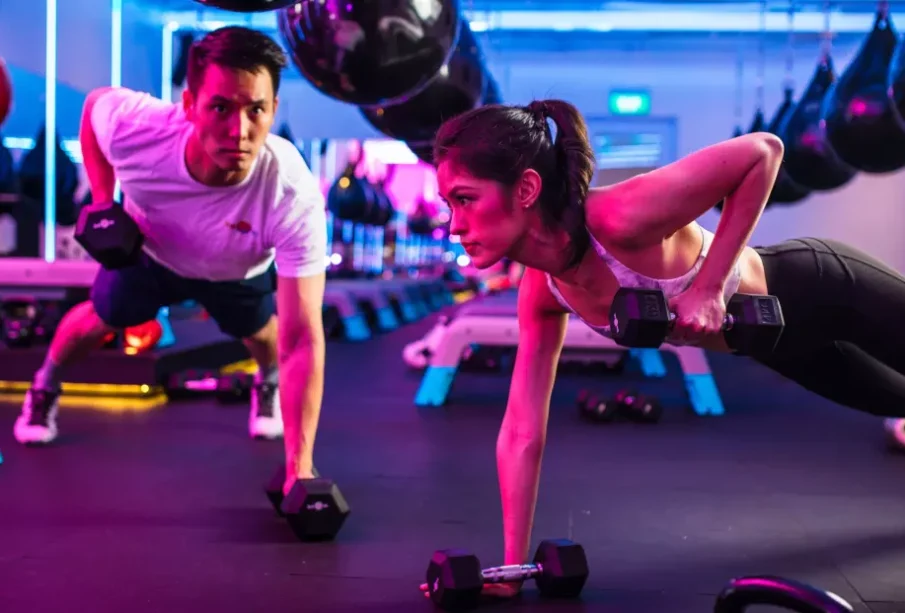The New Active Lifestyle Economy: How Singapore’s Fitness Boom Fuels Related Industries

The Rise of the Active Lifestyle Economy
Singapore’s fitness industry is no longer just about gym memberships and workouts—it has become a powerful economic driver that influences fashion, technology, food, tourism, and even real estate. As the city-state evolves into one of Asia’s health-conscious capitals, the fitness boom is transforming multiple sectors in unexpected ways.
Joining the best gym Singapore facilities is no longer seen as a hobby but as part of a broader lifestyle choice. This mindset shift has created what experts now call the “active lifestyle economy”, a multi-billion-dollar ecosystem that touches almost every aspect of modern living in Singapore.
The Cultural Shift Toward Fitness as a Lifestyle
In the past, fitness was often viewed as a short-term activity—something people pursued before events or holidays. Today, it has become embedded in Singapore’s urban culture. People prioritise physical health alongside career and family, and this shift has created continuous demand for products and services that support active living.
Social media has amplified this transformation. Fitness influencers, wearable technology, and gym communities have encouraged more Singaporeans to treat wellness as a daily priority. This cultural change has fuelled a ripple effect across industries far beyond the gym.
The Economic Ripple Effect of Singapore’s Fitness Boom
The growing fitness culture supports an entire network of interconnected industries. These sectors benefit from the demand for products, services, and experiences that complement active lifestyles.
1. Sports and Activewear Industry
The surge in gym participation has propelled Singapore’s activewear market. Consumers are willing to invest in premium athletic clothing that combines performance, comfort, and style. From office-to-gym outfits to sustainable workout gear, brands are racing to cater to the growing demographic of health-conscious professionals.
Local designers and international labels alike are expanding collections for both men and women, blending fashion with functionality. This trend has also made athleisure a social norm—gym clothes are now acceptable in cafés, workplaces, and casual gatherings.
2. Health Food, Nutrition, and Supplement Market
The emphasis on fitness has directly influenced eating habits. Singaporeans now seek clean, protein-rich, and balanced meals that align with their workout goals. Healthy cafés, juice bars, and meal-prep companies are thriving as people look for convenience without compromising nutrition.
Gyms frequently collaborate with meal delivery services or nutrition brands to provide customised diet plans. The rise of plant-based and functional foods has also reshaped grocery shelves, showing how fitness awareness extends to daily consumption choices.
3. Technology and Fitness Integration
Technology is the backbone of Singapore’s fitness boom. Apps, wearable trackers, and smart gym equipment allow users to monitor performance, sleep quality, and recovery. Digital coaching, AI-based training plans, and real-time analytics have made fitness more scientific and measurable.
This tech-driven shift has spurred growth in health startups, device manufacturing, and app development. The data gathered from these tools also helps trainers and businesses personalise services, making technology a central player in the wellness economy.
4. Wellness and Tourism Industry
The fusion of fitness and travel has created new opportunities for hotels and tourism operators. Many travellers now include workout facilities in their selection criteria when booking accommodation. Singapore’s clean infrastructure and abundance of gyms make it ideal for fitness-conscious tourists.
Wellness tourism packages often include short-term gym memberships, spa treatments, and outdoor adventure activities. The country’s premium fitness centres contribute to this by offering day passes and flexible visitor options, allowing travellers to stay healthy while exploring.
5. Real Estate and Urban Planning
Fitness is now influencing property design in Singapore. Developers incorporate gyms, yoga decks, and outdoor workout spaces into residential and commercial projects. This is particularly evident in mixed-use developments that combine housing, offices, and lifestyle amenities under one roof.
Buildings with high-quality wellness infrastructure command better rental and resale values. The integration of fitness facilities into real estate is no longer a luxury but an expectation among health-conscious residents.
The Role of Corporate Wellness in Economic Growth
Singapore’s workforce is highly competitive, and companies are embracing fitness partnerships to boost morale and performance. Corporate wellness programmes are now an essential part of business strategy, promoting healthier habits among employees and reducing medical costs.
By collaborating with professional gyms, employers enhance staff engagement and productivity. These initiatives also feed into the broader economy—corporate wellness contracts generate consistent revenue for gyms, fitness trainers, and equipment providers.
True Fitness Singapore and the Modern Wellness Economy
As one of the pioneers in holistic fitness experiences, True Fitness Singapore plays a leading role in this active lifestyle economy. The gym integrates fitness technology, expert coaching, and community-building to provide more than just physical training. It represents how modern fitness centres can drive innovation and support surrounding industries.
True Fitness Singapore collaborates with wellness brands, nutritionists, and event organisers to create comprehensive experiences that go beyond workouts. Its impact extends to local retail, hospitality, and technology ecosystems, illustrating how one fitness brand can shape broader economic trends.
The Growing Role of E-Commerce in Fitness Consumption
Online retail has become a major player in Singapore’s active lifestyle economy. From gym equipment and supplements to digital workout subscriptions, e-commerce platforms cater to growing consumer demand.
Shoppers can now compare products, follow personalised recommendations, and receive doorstep delivery for everything related to health and wellness. The convenience of digital marketplaces complements the busy routines of urban residents, ensuring the fitness economy continues to expand both offline and online.
Fitness Events and Community Engagement
Mass-participation fitness events such as marathons, triathlons, and charity challenges contribute millions to Singapore’s economy each year. These gatherings boost tourism, hospitality, and merchandising industries while promoting community wellness.
Even smaller-scale gym challenges and open fitness days drive social interaction and consumer spending. As participation grows, local businesses benefit from increased foot traffic and brand exposure, further reinforcing the economic value of the fitness culture.
The Sustainability Angle: Conscious Consumption in Fitness
Sustainability is becoming a major consideration in Singapore’s fitness ecosystem. Consumers prefer brands that use eco-friendly materials, energy-efficient gyms, and low-waste meal services. Fitness companies are responding with sustainable activewear, recyclable packaging, and renewable energy initiatives.
This green evolution aligns with Singapore’s national sustainability agenda, positioning the fitness economy as both profitable and environmentally responsible.
Economic Projections for Singapore’s Fitness-Linked Industries
Analysts predict continued growth across all fitness-related sectors. The integration of health into daily life ensures consistent consumer demand. New business models—such as fitness technology subscriptions, hybrid training memberships, and personalised wellness apps—will further expand the market.
The convergence of fitness, fashion, food, and technology signals that the active lifestyle economy is not a passing trend but a long-term economic pillar. As more Singaporeans prioritise wellbeing, these industries will continue to thrive together.
Frequently Asked Questions (FAQ)
Q1: What is meant by Singapore’s “active lifestyle economy”?
It refers to the growing ecosystem of industries—such as fitness, nutrition, fashion, technology, and tourism—that support health-conscious living and benefit from the city’s fitness culture.
Q2: How has fitness changed consumer behaviour in Singapore?
People now prioritise health-driven purchases, from activewear and supplements to gym memberships and wellness travel experiences.
Q3: Why are companies investing in fitness partnerships?
Corporate wellness initiatives improve employee productivity, lower healthcare costs, and enhance company reputation.
Q4: What industries benefit the most from Singapore’s fitness boom?
Activewear, food and nutrition, tech, real estate, tourism, and e-commerce are among the biggest beneficiaries.
Q5: How is technology shaping the fitness economy?
Wearables, smart gym machines, and AI-driven apps provide data insights and personalisation, driving consumer engagement and new revenue streams.
Q6: What makes True Fitness Singapore a part of this growing ecosystem?
True Fitness Singapore blends advanced equipment, professional training, and holistic wellness experiences, serving as a hub that connects fitness with other industries.
Q7: Is the fitness economy sustainable in the long term?
Yes. As wellness becomes a lifestyle priority, consumer demand for health-focused products and experiences will ensure steady, long-term growth across sectors.








